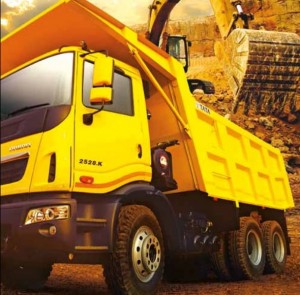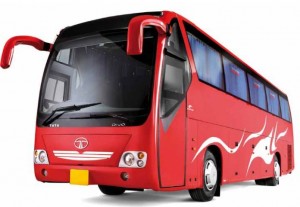Greater focus on new vehicle variants to boost sales
By R. Natarajan, Managing Editor & Publisher
 Tata Motors still retains its market leadership in the Indian commercial vehicle industry. Despite commanding nearly 60 per cent of the Indian commercial vehicle market, the company is gearing itself to meet the emerging competition with the entry of multinationals in the potentially strong Indian market. Mr. Ravi Pisharody, President – Commercial Vehicles Business Unit, Tata Motors, explained in detail the company strategy to maintain its market in the emerging scenario.
Tata Motors still retains its market leadership in the Indian commercial vehicle industry. Despite commanding nearly 60 per cent of the Indian commercial vehicle market, the company is gearing itself to meet the emerging competition with the entry of multinationals in the potentially strong Indian market. Mr. Ravi Pisharody, President – Commercial Vehicles Business Unit, Tata Motors, explained in detail the company strategy to maintain its market in the emerging scenario.
In 2011-12, the major new introductions by Tata Motors were the Zip and the Iris. Their numbers were ramped up well since their launch. In March 2012, the company turned out 5,000 units, which is close to 200 per day. Production is likely to hit 7,500 per month, which is 300 per day, and could be done at its Pant Nagar plant. The Dharwad plant of the company has also started production of the Zip in March.
With the Tata Ace performing outstandingly well since its launch, the company has recently come up with the Super Ace and the Ace EX. The Ace EX, which costs around Rs. 8,000 more than the regular Ace, comes with a start-stop battery and bigger tyres, and also offers seven per cent better fuel economy. The company has an 80 per cent market share in the Ace Cargo segment and 75 per cent in the passenger carrier segment. With more variants on offer, the company is sure that its market share would grow further.
 The Ultra range of LCV and ICV vehicles were showcased at Auto Expo 2012. The range would comprise cargo and passenger versions. The company has already soft-launched the passenger version with 100 vehicles on road, and the cargo version is expected to be launched by the second quarter of 2012-13.
The Ultra range of LCV and ICV vehicles were showcased at Auto Expo 2012. The range would comprise cargo and passenger versions. The company has already soft-launched the passenger version with 100 vehicles on road, and the cargo version is expected to be launched by the second quarter of 2012-13.
In the Prima range too, a number of variants, including the Prima tippers, were introduced. With Prima sales crossing 2,000 units last year, the company plans to bring out more models of the Prima range. It also feels the market is gradually maturing and is now ready to pay more for quality products.
According to Mr. Pisharody, Tata Motors’ major strengths lie in its wide product range and plant capacities. For instance, the initial capacity of the company’s Pant Nagar plant was 25,000 vehicles per month. Now it has touched 40,000 units, including smaller vehicles. The company has been consistent in bringing out new variants across different segments to maintain its market share despite stiff competition.
Segment-wise growth
India being a vast market, the last fiscal reveals that the top segment has continued to grow while some other segments were hit. The LCV-ICV segment (4 to 11 tonne) grew by 10 to 15 per cent while the M&HCV segment expanded by five per cent, within which the tipper segment had grown well. The growth trend is expected to continue for six months, after which the M&HCV market growth is likely to be a little faster.
 In FY 2011-12, the 16-tonne segment did not do very well while the 9 and 11-tonne segments grew by 30 per cent. This could be a case of the former segment migrating to the latter. The tipper segment witnessed a growth of 25 per cent, without which the overall M&HCV growth won’t be even five to seven per cent. Another interesting, though expected, outcome was the strong growth of the SCV segment which, being less influenced by macro-economic factors, grew by over 20 per cent. The SCV segment is also a huge employment generator with many people who buy the Zip and the Iris making quick money.
In FY 2011-12, the 16-tonne segment did not do very well while the 9 and 11-tonne segments grew by 30 per cent. This could be a case of the former segment migrating to the latter. The tipper segment witnessed a growth of 25 per cent, without which the overall M&HCV growth won’t be even five to seven per cent. Another interesting, though expected, outcome was the strong growth of the SCV segment which, being less influenced by macro-economic factors, grew by over 20 per cent. The SCV segment is also a huge employment generator with many people who buy the Zip and the Iris making quick money.
As for vehicle financing, Tata Motors has had 15 to 20 new tie-ups with PSUs, NBFCs and public sector banks. In the truck segment as a whole, the company registered a growth of seven to eight per cent. The bus segment performance generally depends on STUs which drove last fiscal’s growth to be flat, in contrast to the 20 per cent growth the year before. Since the bus segment is considered more stable than trucks, its growth for the current year is projected to be 10 per cent.